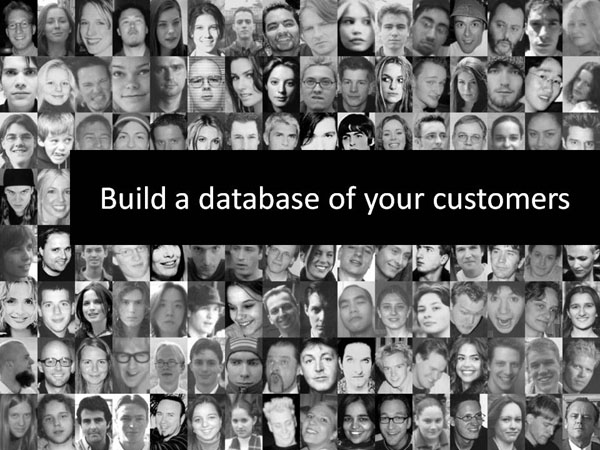Marketing Gold: How to Build and Maintain a Customer Database for Business Growth
Is Your Database a Coal Mine or a Gold Mine?
In the world of marketing, your database isn’t just a collection of names and emails—it’s your gold mine. A well-maintained, dynamic customer database is one of the most valuable assets your business can have. Whether you’re running a small business, managing a real estate firm, or leading a marketing agency, a strategic database can fuel your sales pipeline, strengthen customer relationships, and maximize your marketing ROI.
But here’s the challenge: many businesses either don’t have a proper database or they’re not managing it effectively. If you don’t have a structured system, your leads, prospects, and existing customers are slipping through the cracks.
Let’s dive into how you can build, optimize, and leverage a customer database that drives sales and strengthens client relationships.
Why You Need a Customer Database
Think of your customer database as your business’s backbone—a central place where you store crucial information about your leads, prospects, and current customers. Here’s why it’s essential:
- Centralized Customer Information: Easily access customer contact details, preferences, and history in one place.
- Targeted Marketing Campaigns: Segment your audience for personalized marketing messages that drive conversions.
- Relationship Building: Keep track of interactions to nurture long-term client relationships.
- Sales Tracking: Identify high-value leads and past customers for follow-ups and retargeting.
- Data-Driven Decisions: Analyze customer trends and behaviors to refine your marketing strategy.
Simply put, a clean, updated, and well-segmented database is one of the most powerful marketing tools at your disposal.
How to Build Your Customer Database
1. Start with a Simple Master Spreadsheet
If you’re new to database management, keep it simple. Use Excel, Google Sheets, or Numbers to create a master file. Here’s what to include:
- First and Last Name
- Email Address
- Phone Number
- Mailing Address
- Company Name (if applicable)
- Customer Category (Lead, Prospect, Current Client, Past Client, VIP, etc.)
- Last Contacted Date
- Notes (purchase history, interests, special requests, etc.)
A simple, well-organized spreadsheet is an easy starting point before transitioning to a Customer Relationship Management (CRM) platform.
2. Upgrade to a CRM for Automation & Efficiency
If you’re ready for more automation and functionality, consider CRM tools such as:
- MailChimp (best for email marketing automation)
- HubSpot (great for small to mid-sized businesses)
- Salesforce (powerful enterprise-level CRM)
- ActiveCampaign (ideal for advanced segmentation and email sequences)
- Zoho CRM (budget-friendly alternative with strong features)
A CRM automates customer interactions, tracks emails, manages pipelines, and streamlines your marketing efforts—all in one place.
Best Practices for Managing Your Database
1. Keep It Updated and Organized
A messy, outdated database won’t help your marketing strategy. Set a weekly or monthly reminder to clean up your database by removing outdated contacts and verifying information.
2. Segment Your Contacts
Not all customers are the same. Segment your database into different categories, such as:
- Leads – People who have shown interest but haven’t made a purchase yet.
- Prospects – Contacts who are in the decision-making process.
- Current Customers – Active customers who buy from you.
- Past Customers – Those who haven’t purchased in a while but might again.
- VIP Customers – High-value clients who deserve personalized offers.
- Referral Sources – Business partners, influencers, and other referral sources.
With segmentation, you can send highly targeted email campaigns instead of generic messages.
3. Automate Data Entry Where Possible
Manually updating data is time-consuming. Automate data entry by integrating your database with online forms, email sign-ups, and social media lead-generation tools.
For example:
- Use lead capture forms on your website that auto-populate your CRM.
- Sync social media lead ads (Facebook, Instagram, LinkedIn) with your email list.
- Use a tool like Zapier to connect different apps and automate workflows.
4. Use Your Database for Multi-Channel Marketing
Your customer database isn’t just for email blasts—it’s a powerful resource for multi-channel marketing, including:
- Email Marketing Campaigns – Personalized newsletters, promotions, and follow-ups.
- Social Media Marketing – Create custom audiences for Facebook and Instagram ads.
- SMS Marketing – Send special offers or reminders via text messages.
- Direct Mail – Use customer addresses to send postcards, holiday gifts, or thank-you notes.
5. Never Let It Go Stale – Engage Regularly
Your database is only valuable if you’re consistently engaging with your contacts. Send personalized emails, check in with VIP customers, and provide valuable content that keeps your brand top-of-mind.
Transform Your Database into a Marketing Powerhouse
Building a gold mine of customer data takes time and effort, but the return is priceless. Whether you start with a simple spreadsheet or a full-fledged CRM, the key is to keep it updated, segmented, and used effectively for targeted marketing.
📌 Pro Tip: If you lose everything—your website, your email list, your social media pages—but still have your customer database, you can rebuild your business from the ground up!
Ready to optimize your marketing strategy? Start managing your database today and watch your business thrive!
📢 Let’s Build Your Marketing Gold Mine Together!
Struggling with database management, email marketing, or customer segmentation? Sandy Hibbard Creative can help you create a powerful marketing strategy that turns your contacts into conversions.
Contact us today and let’s put your database work for you! 🚀
